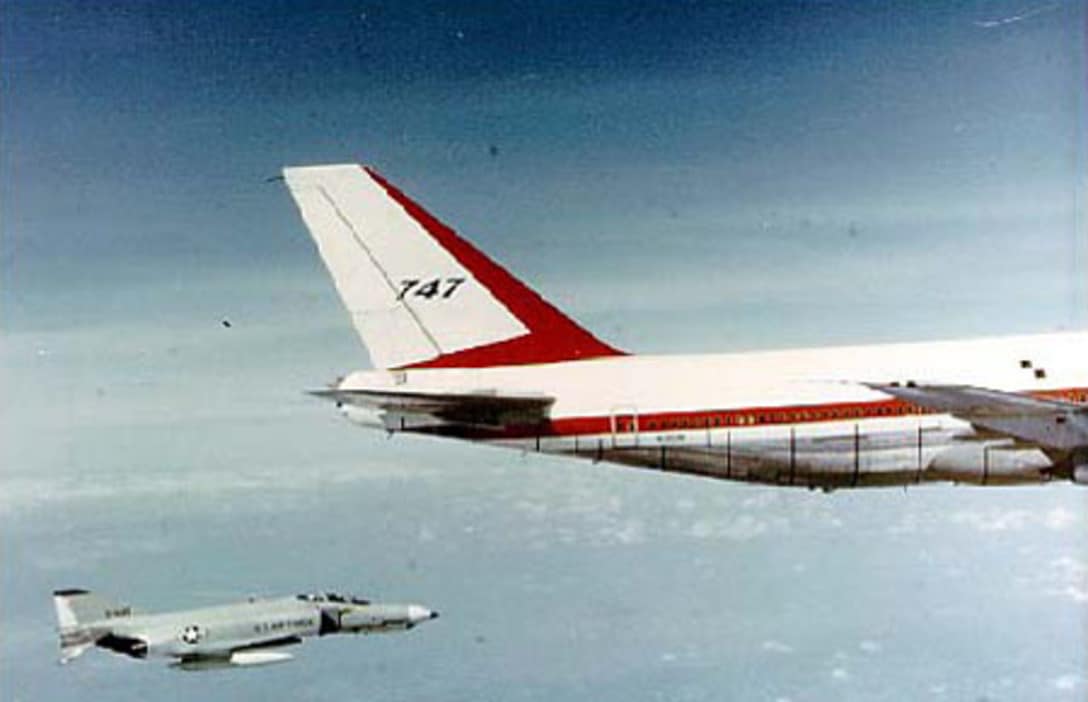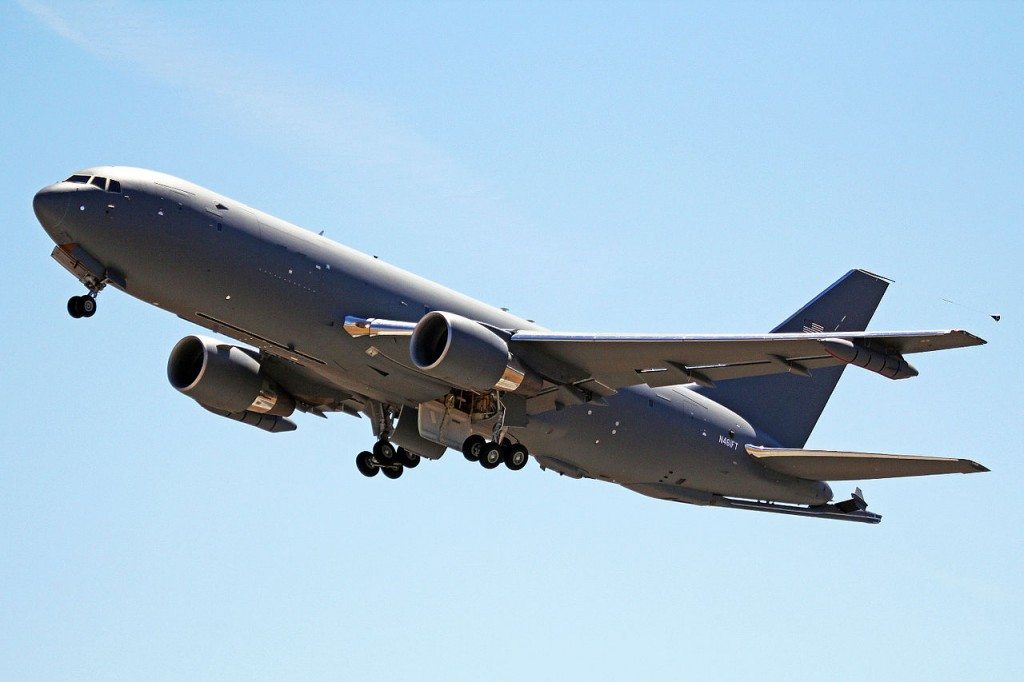The Boeing 747 had a real chance to become the a fleet of KC-25s in the US Air Force
Unbeknownst to many in the general population, the KC-747 (what would have become the KC-25) was the potential powerhouse that fizzled out before it could make an impact on military aviation. Aviation enthusiasts acknowledge the shortcomings of this monstrous machine and recognize the reasoning behind the United States Air Force’s decision to decline the world’s largest tanker. However, at first glance, this giant tanker-cargo aircraft appeared to be the perfect solution to a growing need.
Throughout the course of history, dating back to World War II, the need for capable and innovative aircraft has constantly risen. With each triggering event that builds global tensions, world militaries have paralleled their growth with the exponentially increasing need, as best they can. A large portion of the aerial movement includes tanker aircraft. Aerial refueling provides the ability for aircraft to stay on station for longer periods of time, creating benefits such as extending periods of survey and intelligence gathering, as well as enabling trips across long distances much faster.
The United States Air Force (USAF) employs the largest number of tanker aircraft in the world, with a significant amount operated by the National Guard. The most common tanker in the inventory is the venerable KC-135. However, it has taken many competitive designs spanning the last few decades to reach this point of preference.
The hunt for a new tanker
In the 1960s, an initiative was created that paved the way for present-day tanker-cargo aircraft. It was dubbed the Advanced Tanker-Cargo Aircraft (ATCA) program. The goal was to create a heavy tanker-transport machine that would accommodate the growing need for aerial refueling and transportation of supplies to deployed troops.
According to a Jalopnik article from 2014 by Tyler Rogoway, the program’s initial top competitors included versions of the DC-10, L-1011, C-5, and B747. Each variant brought unique aspects to the drawing board; however, they also brought their fair share of detrimental characteristics. The C-5 is a colossal aircraft, and its sheer size is what nixed it. The L-1011 wasn’t configured for cargo operations at the time, which caused it to be too high a risk moving forward.
A decade after this initiative began, the DC-10 (KC-10) and B747 (KC-25) were paired against each other as finalists to support USAF personnel moving forward. Ultimately, the KC-10 was selected, regardless of the valiant effort KC-25 proponents put forth.
The KC-25 theoretically could have been selected to fit a need for a larger tanker with additional cargo capacity. The concept behind its creation was one of ingenuity. On paper, it seemed like a winner. However, only two were ever purchased. The buyer? The Iranian Air Force.
So why was the KC-25, a potential powerhouse aircraft, declined by the buyer it was designed for amid a time of great need?
KC-25 Specifications and Performance
During the height of the competition, the KC-25 was marketed as the ultimate tanker-cargo carrier. It far surpassed others in terms of fuel capacity, payload capability, and sheer speed. This behemoth can haul payloads of around 200,000 pounds, paired with more than 455,000 pounds of fuel. That means it carries 100,000 more pounds of fuel than the KC-10 while effortlessly flying longer distances. Unfortunately, its large size meant it could not operate on shorter runways.
The KC-25 was tested relentlessly with a multitude of receiver aircraft and passed with flying colors each and every time. Reports state that during refueling tests, the aircraft remained incredibly stable.
The KC-25 was equipped with a boom. The final configurations of the KC-747 planted an aerial refueling receptacle on the front end, with a nose cargo door that increased ease of on—and off–loading. It could offload twice as much fuel as an aircraft as the KC-135.
This massive aircraft turned tanker was meant to be an epic show of American might mixed with innovation. It was unmatched during its time; however, bigger does not always mean better in the eyes of the military.
The KC-25 Falls Short
When all was said and done, the KC-25 was still thrown to the wayside. Major points of reason include the astronomical operational expenses, its immense size preventing access to numerous runways, and the non-existent need for an aircraft that carries such high volumes of fuel and payloads. In layman’s terms, this aircraft was overkill. At the time of the final decision, the USAF had a budget that they felt would be put to better use across the acquisition of more aircraft that still performed exceptionally well across all testing platforms.

The KC-10 was a winner in the eyes of the USAF at the end of the competition due to the cheaper cost of operations as well as the key and unique features it brought to the table. This tanker-cargo aircraft could operate on shorter runways, opening up a plethora of strategic locations.
It offered automated break-away capabilities rarely found during this time and a fly-by-wire boom with a larger envelope for refueling. Comparing the KC-25 tanker-cargo aircraft to current-day applications, the competition operates more efficiently at a lower price point, with a smaller footprint, while still surpassing mission needs. Tankers such as the KC-135 and KC-10 fit better into mission platforms for squadrons throughout the USAF. The KC-767 and later the KC-46 program demonstrated that the sweet spot for a tanker was in the medium-sized category.
Yet the concept of the KC-25 lived on all the way until 2000. An Air Power Australia analysis deck (an independent think tank not affiliated with the RAAF or Australia’s Department of Defence) available on the internet highlighted that Boeing continued to look at modifying the 747-400 platform but ultimately abandoned it in favor of the 767-based aircraft. There is no other source to confirm whether or not it was seriously looked at as an option in more recent times by any nation.
Editor’s Note: The original article incorrectly stated that the RAAF produced the study mentioned on the 747 tanker. The article has since been corrected.


One other thing that ruled out the KC-25 as the air force’s new tanker, was the size of the logistics chain that this giant needed in order for large numbers to serve in the USAF’s Air Refueling Squadrons, since at this time the only 747’s in service with the air force were the tiny fleet of four E-4 Nightwatch aircraft.
I am a former US Air Force pilot and I was lucky enough to fly both the KC-135A and the KC-10A. I also flew the 747-100 (as an F/E) for six years at TWA.
During my time in the KC-10, I flew with another pilot who was assigned to the Air Force Systems Procurement office (SPO) during the selection process. He told me that the pivotal argument for the KC-10 was fuel offload available vs radius of action.
Simply put, the KC-10 has more fuel available because it burns less to carry it around. The 747 takes off with more, initially but it burns it much faster. The lines on the chart cross at about 2000 miles. You can make a similar argument in considering TIME aloft.
I can tell you that most of my operational sorties in the KC-10 were over on the side of the chart that proves the Air Force made the right choice.
I loved both airplanes, but in this case, the KC-10 was the best choice. If there were any DC-10 parts out there in the commercial inventory today, I would say that it is still better than the KC-46 but lack of spare parts drives up costs of operating the “Ten”.
Too bad. Great airplane.
That aircraft is on display at the Museum of Flight at Boeing field. You can walk through the plane and see the boomers station.
Bob, the “magic numbers” about the “….burns less fuel to carry it around.” was a profile of takeoff, fly 2000 miles, offload 100,000 and fly back 2000 miles. KC10 could do it, KC25 couldn’t.
The modified 747 is in the collection at The Museum of Flight in Seattle, less the refueling boom.